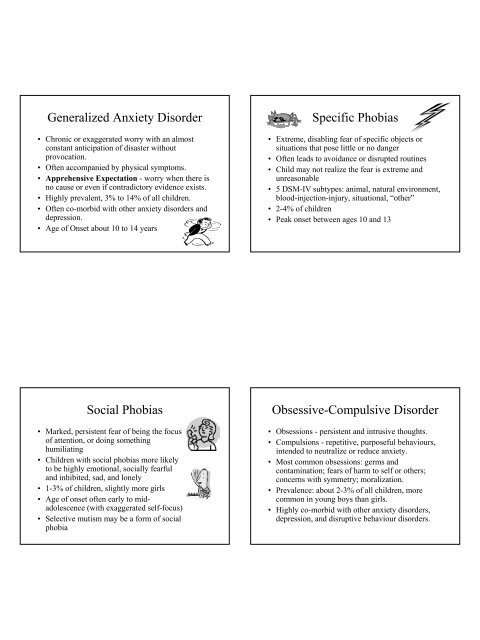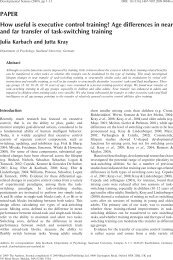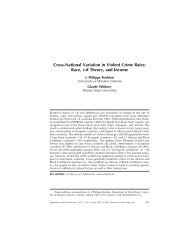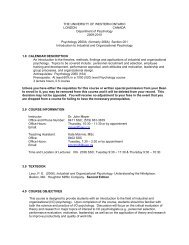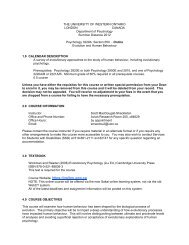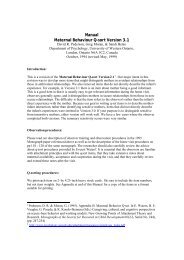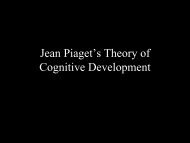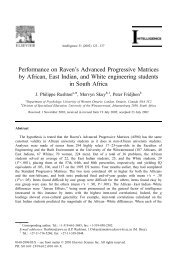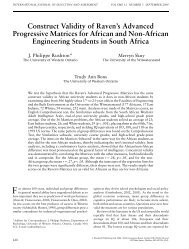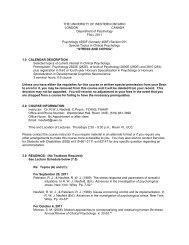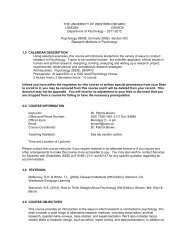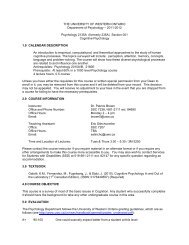Lecture 7 â Anxiety Disorders Anxiety Symptoms of ... - Psychology
Lecture 7 â Anxiety Disorders Anxiety Symptoms of ... - Psychology
Lecture 7 â Anxiety Disorders Anxiety Symptoms of ... - Psychology
You also want an ePaper? Increase the reach of your titles
YUMPU automatically turns print PDFs into web optimized ePapers that Google loves.
Generalized <strong>Anxiety</strong> Disorder• Chronic or exaggerated worry with an almostconstant anticipation <strong>of</strong> disaster withoutprovocation.• Often accompanied by physical symptoms.• Apprehensive Expectation - worry when there isno cause or even if contradictory evidence exists.• Highly prevalent, 3% to 14% <strong>of</strong> all children.• Often co-morbid with other anxiety disorders anddepression.• Age <strong>of</strong> Onset about 10 to 14 yearsSpecific Phobias• Extreme, disabling fear <strong>of</strong> specific objects orsituations that pose little or no danger• Often leads to avoidance or disrupted routines• Child may not realize the fear is extreme andunreasonable• 5 DSM-IV subtypes: animal, natural environment,blood-injection-injury, situational, “other”• 2-4% <strong>of</strong> children• Peak onset between ages 10 and 13Social Phobias• Marked, persistent fear <strong>of</strong> being the focus<strong>of</strong> attention, or doing somethinghumiliating• Children with social phobias more likelyto be highly emotional, socially fearfuland inhibited, sad, and lonely• 1-3% <strong>of</strong> children, slightly more girls• Age <strong>of</strong> onset <strong>of</strong>ten early to midadolescence(with exaggerated self-focus)• Selective mutism may be a form <strong>of</strong> socialphobiaObsessive-Compulsive Disorder• Obsessions - persistent and intrusive thoughts.• Compulsions - repetitive, purposeful behaviours,intended to neutralize or reduce anxiety.• Most common obsessions: germs andcontamination; fears <strong>of</strong> harm to self or others;concerns with symmetry; moralization.• Prevalence: about 2-3% <strong>of</strong> all children, morecommon in young boys than girls.• Highly co-morbid with other anxiety disorders,depression, and disruptive behaviour disorders.


